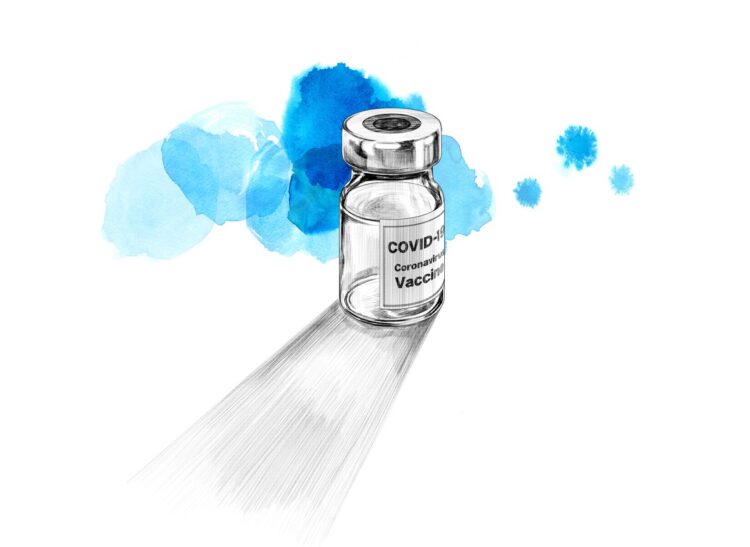April 23, 2021
By Stephanie Schorow for the Global Mass Vaccination Site Collaborative
The ever-evolving status of COVID-19 vaccines — including the sudden pause on use of the Johnson & Johnson vaccine — preoccupied attendees of the April 23, 2021, collaborative meeting. Eric Goralnick, MD, MS, Associate Faculty, Ariadne Labs and Principal Investigator of the collaborative lead a round robin discussion in which members shared current challenges.
Discussion was centered on inventory, second-dose appointments, and on how to transition from mass sites to smaller or mobile sites. In Massachusetts, 75 percent of residents are projected to be vaccinated which may lead to closing of large vaccination sites. Collaboration members were also seeing slowdowns in smaller mobile sites as well as mass vaccination sites. Could this be due to hesitation or mass saturation? There were no clear answers.
Becky Fox, MSN, RN-BC, of Atrium Health acknowledged no-show rates have increased in certain efforts from 2% to 8%, which led teams to look for other creative initiatives to bring vaccines to the patients. It was an exercise she compared to “a bit of throwing vaccine-spaghetti against the wall” to see what sticks. The team is shifting to smaller, mobile units but wants to continue to have a mass site presence, so that if and when the need arises (e.g., mandatory requirements and/or school requirements), Atrium Health could expand quickly. Examples include small church groups, behavioral health outpatient treatment centers, restaurants, and small businesses where the number of vaccines ranged from 5–40 total doses per event.
Fox raised another issue: required vaccinations for health-care workers.” If we (health systems and clinical experts) agree vaccines are important, how do we push OUR health care systems to say, ‘This is mandatory for all of our employees?” The issue of requiring college students to get vaccinated was raised with reference to this article and this one. Other organizations shared that they too are considering mandates but would prefer to implement once full FDA approval for the vaccines is received.
Collaborators discussed how to juggle vaccines that must be kept frozen with no-shows. Maintaining inventory remains a crucial issue — everyone is determined that every shot be used. Instead of giving fully thawed Pfizer vaccines, Adrian Backus of CORE described using mobile freezers and thaw as needed. At the time Pfizer had recently released guidance allowing for 14 days of storage in a freezer.” (This has since been updated. See here.) “When you get to the end of 14 days in the freezer, you have an additional 5 days, so you have 19 days,” Will Ford of UC San Diego Health, noted. “You can dilute and draw to give yourself another 6 hours according to Pfizer.” Another issue was whether to offer two different vaccines — like Moderna and Johnson & Johnson — at the same place and offer the choice to people.
Fox described a “great” event in Charlotte in which a vaccination clinic was held at a brewery and those getting shots got a free pint (provided by the brewery). Staffed with about 5 to 6 people, the event drew a diverse group of 107 people aged 18 to 35. No appointments were needed, and it was held in the evening, as many patients have described the challenge of getting to a vaccination site during daytime hours due to their work schedules. There were zero reactions or complaints of anxiety or nervousness — “that was the coolest part, as the observation was in a beautiful outdoor space, where patients could enjoy their beverage if they wished, while they waited.” Social media was used to promote the event, giving it a “cool factor.” They plan to go back to the brewery in three weeks for second doses. This was a good example of “going to the people,” said Margaret Ben-Or, Ariadne Labs’ project manager for the collaborative.
Key Takeaways
- Stay flexible.Vaccination efforts may morph from mass sites to smaller sites, but a hybrid model might work at the current time.
- Be clear about guidelines for thawing vaccines as teams may have more doses than they first realize.
- Be creative. Go to where people are — even if it is a bar.
The Global Mass Vaccination Site Collaborative was launched as a way for stakeholders directing vaccination campaigns around the world to come together and learn from each other’s efforts. This blog series was created to record and share the learning and insights gained from this collaboration. Read blogs from our previous meetings here.



